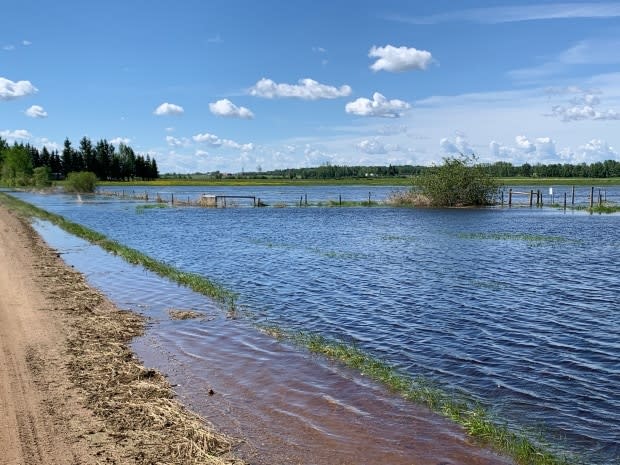Bust or bumper? Expectations of a 2020 great harvest depend on where you live
As any farmer will tell you, it's all about the weather.
While recent dry, warm autumn days have been a boon for getting the harvest off in near-record time, the size and quality of those harvests vary widely in Alberta because of weather earlier in the growing season.
Lynn Jacobson, president of the Alberta Federation of Agriculture, said expectations of a record harvest from the Prairie provinces in 2020 have some truth — but it's definitely not the case for everyone.
Southern Alberta farmers have had "some of the best yields some people have seen for a very long time," Jacobson told CBC Edmonton's Radio Active this week.
"When you get farther north then you start running into more issues," he said. "They had excess moisture in some areas, and disease took some crops. Peace River has been really a mixed bag from what we've been hearing from people. Some areas are not too bad. Others are, you know, drowned out."
Southern Alberta had a stellar year, according to Dave Bishop, chair of the Alberta Barley Commission and a farmer in the Lethbridge area.
The bushels-per-acre statistics Bishop offered, backed up by the most recent Alberta Crop Report, give weight to recent comments from Alberta Premier Jason Kenney about "one of the largest crops in history."
"Overall, you know, our crops were exceptional," Bishop told Radio Active, with marked increases noted both in irrigated crops as well as those grown in dryland conditions.
For example, in places where dryland barley normally brings in 75 to 80 bushels per acre, some farmers this year were seeing upwards of 100, Bishop said.
Pulses in the region were "more of a bumper crop," up from an average of about 40 bushels per acre to 60 and even 80 in some places, he said.
"Canola under irrigation is one of our better years," he added. "We were in that 90-bushel range on the canola on irrigation. We're usually in that 65 to 70 [range]."
'Excessive moisture'
According to the crop report for Oct. 6, released Friday, yields across the province for spring wheat, barley, oats, canola and dry peas are about nine per cent higher than both the five-year and 10-year averages.
The story is quite different elsewhere in the province where heavy rain and flooding early in the season took its toll.
The crop report notes that yields in the northwest and Peace regions are 24 and 14 per cent below average respectively, while crop quality in those regions as well as in the northeast were impacted by the wet spring and summer.

"When we started planting things, we were looking pretty good," said Michael Kalisvaart, who operates Kalco Farms, a 5,000-hectare farm near Gibbons, Alta., that rotates crops of canola, wheat, peas, oats and barley.
"But very quickly, it got very wet," he told Radio Active. "At the tail end of our planting season, we were getting excessive moisture to the point where some of the crops that we seeded were completely flooded out."
Because of those wet conditions, yields are down and the harvest has been a disappointment, added Kalisvaart, who expects to tap into crop insurance this year.
The final assessment of crop quality and quantity throughout the province can be assessed once everything has been harvested, said Jacobson.
And according to the crop report, an exceptionally rain-free fall means the harvest is nearing completion in most areas of the province: all but three per cent is in the bins in the south, and 90 per cent or more is complete in the central and northeast zones.
Overall in Alberta, the harvest is 30 per cent ahead of the 10-year average.
Said Jacobson: "We need just a little more time to actually start pulling in some figures from people, to actually say whether this is going to rival 2016's overall crop across all three Prairie provinces."

